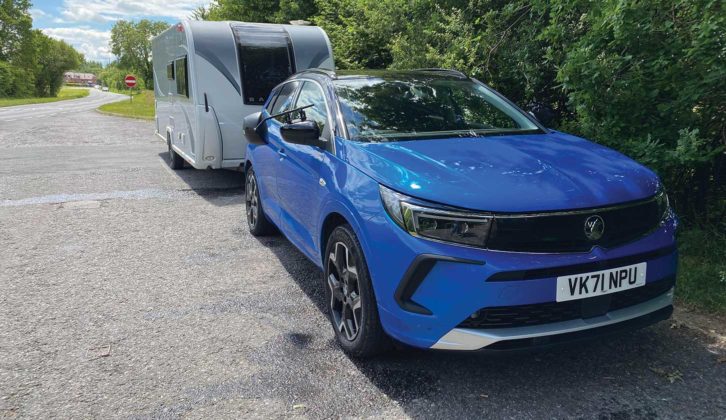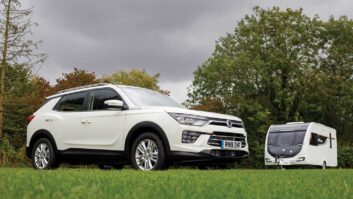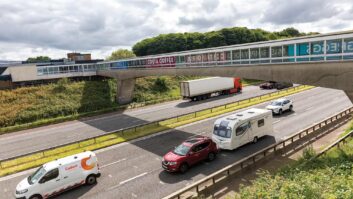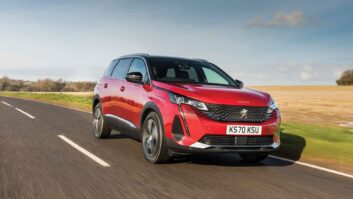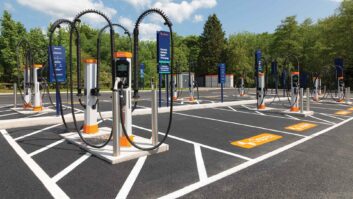Nothing divides opinion among drivers like manual or automatic transmission. But let’s leave aside any prejudices to look at why caravanners love the auto ’box. We’ll also leave
aside its most obvious trait – merely being labour-saving.
First, the friction clutch of a manual gearbox is a necessary evil, and a crude one at that. It must be manipulated simply to move off, let alone select ratios.
Automatics were initially entirely about labour-saving. Early types were actually automated-manual devices, the like of which (with a raft of electronics) now reside in today’s 44-tonne artics.
Then the torque-converter (fluid flywheel) ousted the single friction clutch, meaning moving off was now purely an accelerator pedal affair.
That’s the first advantage for automatic towing.
The car’s handbrake might hold on a 25% incline, but few will manage a twin-axle tourer, too, whose over-run brakes are inert here. In a manual, that required heel-and-toe dexterity between brake and gas, as the clutch bit, or abuse of said friction plate for the duration of a red light.
Once you are on the move, the torque-converter passes drive from the engine to the transmission continually, with gear selections made by several internal clutches – one per ratio – and their actions barely felt, finely controlled and immune from abuse. A more elegant engineering solution; always in the right gear, the engine cannot be made to labour or over-rev.
More control with automatic towing
Those who dislike automatics cite lack of driver control or involvement, but today, not only can drivers decide on the characteristics of the auto ’box, they can also manually select from six to 10 separate ratios, at the flick of a paddle. So how does that help caravanners?
It’s simple – you never pass through neutral, a mis-shift is impossible and the torque flow is uninterrupted. Labour-saving, but a better solution.
Continuously variable transmission (CVT) – most commonly used in twist-n-go scooters – takes this a step further, with no ratio changes at all. Two sets of opposed cones form V-pulleys, one the driver, another the driven.
These are linked by a metal belt under immense tension, drawn lower into the valley of the V or forced to rise up its sides, creating reduction or overdrive at its two extremes.
Initiated in the 1960s DAF 600, since then, Audi, Fiat, Honda and Nissan have all used it, although Subaru is its biggest supporter to date.
The most recent variation is the dual or double-clutch. This uses two friction clutches, one disc inside the doughnut of the other. One connects first, third and fifth ratios, the other handles second, fourth and sixth. Two ratios are always engaged, but only once the clutch is connected to the flywheel. It doesn’t change gear, but changes clutches at what its engineers call the ‘kiss point’.
Leave it in auto or paddle-shift it, the advantage in towing is a more direct feel and manual transmission level of engine braking. It’s a little awkward to creep with in manoeuvres compared to a conventional automatic, however.
Lead picture: the Vauxhall Grandland 1.5 Turbo D 130PS Ultimate Auto, which comes with an eight-speed automatic gearbox.
- Are you after a hand with picking your next towing vehicle? Our guide to choosing a tow car will help you find the one for you.
If you’ve enjoyed reading this article, why not get the latest news, reviews and features delivered direct to your door or inbox every month. Take advantage of our brilliant Practical Caravan magazine SUBSCRIBERS’ OFFER and SIGN UP TO OUR NEWSLETTER for regular weekly updates on all things motorhome related.
